This interview took place in 2014, and now amazingly I see through Google Analytics that a lot of visitors are coming to it on Lassi with Lavina. Perhaps because it is evergreen? So in 2019 I share it with you again!
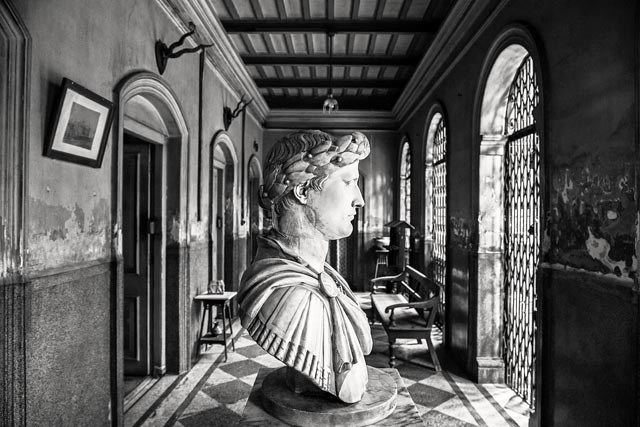
Stories in Stone: Colonial Calcutta – A Vanishing World
[dropcap] C[/dropcap]alcutta was once known as ‘City of Palaces’ and in the days of the British Raj there were opulent buildings built by the rulers as well as the Bengal elite. Today many of these grand structures are in decay and a passionate chronicler of these disappearing stories is Prabir C. Purkayastha, award-winning photojournalist who tells evocative tales through his camera.
One of his ongoing projects is ‘Calcutta: Vanishing Spirits’ in which he is documenting five communities which are fading away – the Jews, Armenians, Chinese, Parsees, and Anglo Indians. He has been capturing these images for the last seven years and sometimes thinks this work will never get completed. Of the Colonial edifices, he writes, “The new architecture reflected the city’s diversity, incorporating both Western and Eastern influences and merging European styles with traditional Hindu. Moorish and Islamic architectural details.” Purkayastha was recently in New York where the Sundaram Tagore Gallery showcased Stories in Stone: Colonial Calcutta, images which tell the story of grand edifices in decline.
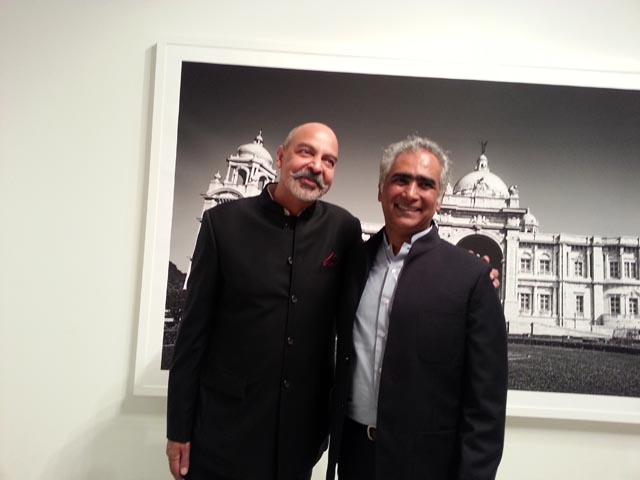
Q and A about Colonial Calcutta with Prabir Purkayastha
Tell me about your growing up years?
[dropcap]M[/dropcap]y father was in the Infantry Garhwal Rifles and I had the most magical childhood along with my sisters growing up in army cantonments. These are army colonies spread across in various cities in India, and they are till today quite identical to what they were when the British were in India, so it was easier for me to step across the threshold of reality and slip into the corridor of days gone by.
Your first memory of seeing these old mansions?
[dropcap] I[/dropcap] still remember the first time my grandfather took me to Victoria Memorial. I was in absolute awe – I thought the king and queen lived there! As a matter of fact, I asked my grandfather, will they allow us in?
For me these monuments were still buried there in my psyche and to go back and revisit them now, I was superimposing a perspective which was born out of my interest into traveling back in time. I could now look at them in a different context altogether and it was in the context of these vanishing communities. So you know, going back into time can be full of pleasure if the memories are good – or it can be very painful if you are searching for ghosts.
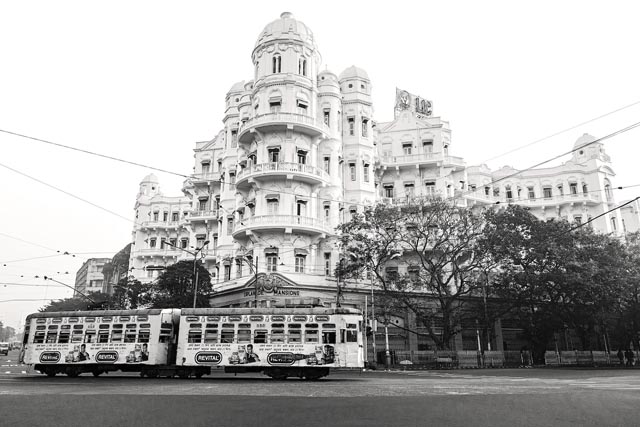
So has it been painful or a pleasure?
[dropcap]F[/dropcap]or me, it was both. I started getting haunted literally by these old mansions, because unlike Delhi, unlike Bombay, even unlike Chennai, the mansions in Calcutta still somehow seem to be rooted in the past. I have visited rajbaris and baganbaris – old palaces and mansions – and in every one of them I have found something almost supernatural. You feel a vibration, you suddenly sense the presence of people who lived in these places but are no longer there. At least that is how I felt – it may not be someone else’s experience but it certainly was mine
I would go to these places, before the sun came out, before it got light in order to do that I wanted. Especially for this body of work, I wanted to be in these places when there was no artificial light because when these monuments were built, homes were built, there was no electricity; at night they would light the lamps and candles and early in the morning they would be bathed in the soft light of dawn and it would still be dark. So I wanted to see how the corners looked, how would the staircase look, how would certain rooms look in this you know growing darkness let’s just put it, so that I could incorporate that feeling, maybe not that light but that feeling into the images, as and when I would shoot them.
Because of my genesis as a photographer, I am a storyteller in my head. I like to romanticize an image, I like to bring to it a sense of solitude, a sense of serenity, a sense of detachment. The person who sees my pictures – even in a crowded room – should feel that only he or she is alone in that room and that there is a connect with the visual in front of them.
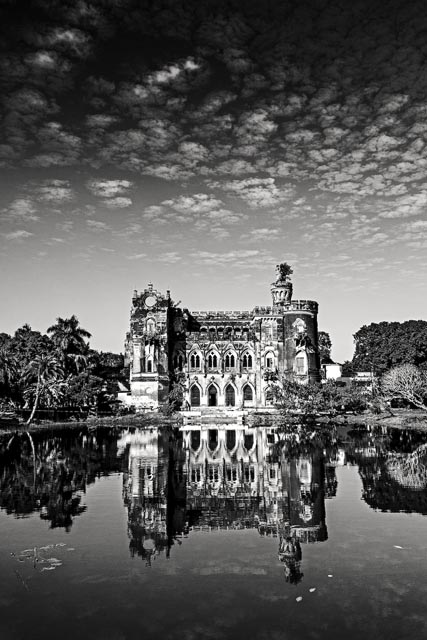
There is a huge marble bust of Alexander the Great at the entrance of the Belgachia Raj Bari. Can you comment on that timeless reminder of the colonial period?
[dropcap]I[/dropcap]t was obtained by the owner’s great grandfather over a century ago and it’s actually so symbolic of the British Raj and the colonial magnificence of the building that in this dimly lit quiet corridor is this very proud figure of a king who sort of strides through the pages of history.
To me this was very significant, it was very symbolic of colonial Calcutta that a Bengali aristocracy was not just politically, not just religiously very advanced and strong, but they were also into the aesthetics, they were also in the desire to be seen as equal of the rulers.
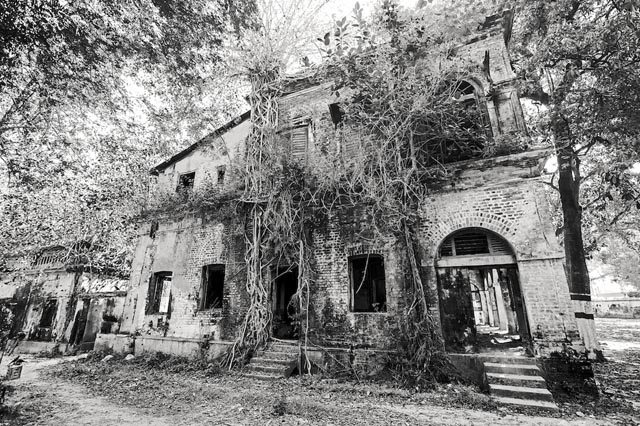
What is the back-story to each of your images?
[dropcap]F[/dropcap]or me each picture is a creation, I don’t shoot casually. I mean I go to these places, I visit, I get back home, I make scribbles, I think about what light, what would be the sound, what would be the effect when they were built, what would be the feeling of people, you know, so sometimes going back in time can be very traumatic. When I go back I am sometimes traumatized to a point that I don’t even take the picture. I just go, spend a couple of hours looking at it and I come back home and I say you know, I have to do it some other time.
I went to this gentleman’s place to the point where he was actually irritated with me, and I said, dada please ignore me, I am just a photographer, I don’t want any sort of help, guidance, or tour of your place. I just want to take a picture, but I must take a picture which satisfies my soul. And the old man probably understood this because after that he called all his staff and said henceforth when this man comes let him just be alone and don’t bother me or bother him. And then one day in the late morning I got this picture.
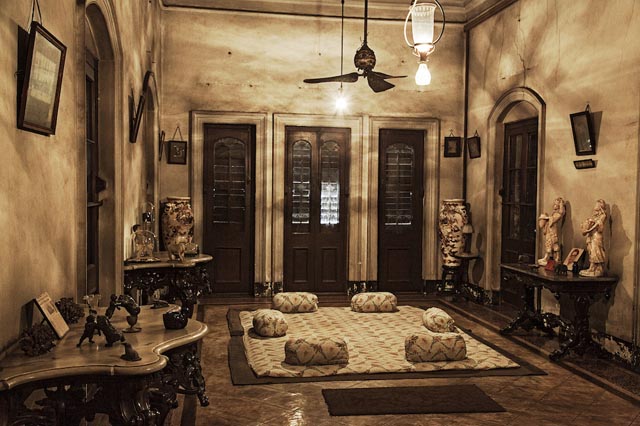
What was most poignant story for you? These are really stories of each mansion that you photographed, so what stayed with you?
[dropcap]Y[/dropcap]ou know, I won’t say that there was one particular incident. It is the sum total, which was, for me when I step into that mental space of shooting these old buildings, I slip into another role and that role consists of fragments of so many different experiences. There was homes that I visited and I photographed which were totally broken but to me in their degraded destroyed state of being I could sit still, sense, and create in my mind through my imagination a glorious past for them, you know, when the house was very beautiful, when people lived in it, and how people must have lived and loved and died. So there were all these experiences, they all sort of came together, there is no one experience that I can talk about which sort of stood out, each one was a fascinating one.
And of course, the world is going on changing with the digital form becoming so important.
[dropcap]Y[/dropcap]es, the world is changing and I am adapting to those changes. I am not resisting it. So you know I realized 7-8 years ago that if I don’t master technology, technology will always master me. So in terms of both photography and in more importantly in terms of printing I have learned technology on both fronts. Now all my work that I print, I print myself.
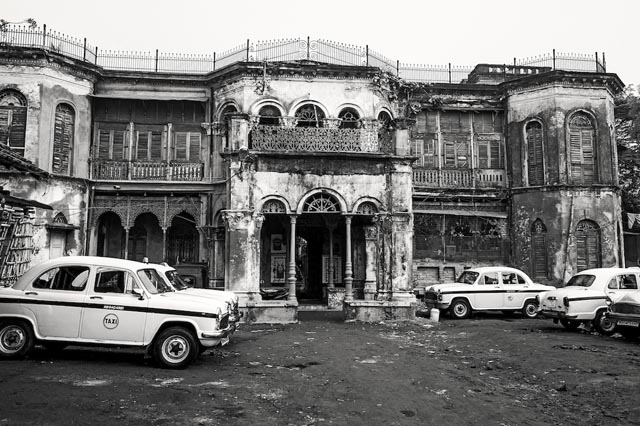
About this image: “During the British Raj, many of Calcutta’s wealthy and noble Bengali residents had multiple mansions within and outside the city to accommodate large joint families and entourages. This decayed mansion, almost 150 years old, once belonged to the zamindar family of Rani Rashmoni, a pious 19th century philanthropist best known for building a large temple dedicated to the Goddess Kali. Today, through neglect and legal tussles, it is reduced to a pitiful ruin, illegally occupied by migrant taxi drivers and their families.”
How do you see yourself and your work in this realm of the past?
[dropcap]O[/dropcap]h, I have never seen myself as playing any pivotal role in doing anything – I am just passing through. I just want, at the end of the day, to feel that it is a life well-lived, that in my own very small way, I have been able to contribute something that hopefully generations after me might find useful. My ancestors from my mother’s side were storytellers and so I see myself as a storyteller, just a storyteller.
(C) Lavina Melwani
(This article was first published in The Hindu in 2014)

4 Comments
Via Google +
Surendra Gupta
+1’d: #Calcutta was once known as ’City of Palaces’ & in the days of British Raj there were opulent buildings…
I spent almost 30 yrs (1959-1987) in Calcutta, and must have lost my mind to leave it and relocate to Delhi. Anyone or any article or anything I see or read about Calcutta makes me sad, for I long to get back. I have spent my formative years and very happy times in ‘Amar Sonar Bangla’. I was a son of the soil but became the son-in-law of the soil in 1994, having married a Bengali in Delhi.
via Google +
Abihang Yaku +
Victoria is one of the beautiful places.
Via Facebook
Shruti Parikh
Thx for sharing – I always learn something new from your posts!